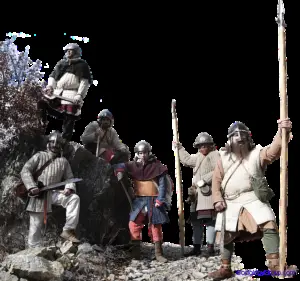Stratification has existed in our society since the beginning of humankind. Stratification existed mainly in three factors which are Slavery System, Estate System, and Caste System.

What is Estate System?
The estate system in earlier times was seen as something like feudalism. Now the question arises: what is feudalism. Feudalism was practiced around the 9th century and it had its influence till the 15th century. Feudalism was basically a system in which people were bound to work for upper-class people in exchange for money or land. Many sociologists researched this term, but there was no peculiar definition of it; people came up with the characteristics of feudalism.
Characteristics of Feudalism:-
- Unlike slavery system this practice was a legal practice, it provided everyone’s rights and duties. The labors were not boycotted from public gatherings.
- There was a broad classification of labor in the estate system which means there was no sort of violence or making them work for longer hours. There were three main key elements called as nobility, clergy, and commons. Nobility’s duty was to protect them, the clergy was the one to see their well-being and common always provided them with their basic needs like food or sanitation. This estate was approximately said to form 0.5% of the France population.
- Lastly, there were well-defined political groups. It came with rights not only duties which were a relief opposite to the Slavery system.
The three estates existed before the famous French Revolution: the first estate, second state, third state, and estates general.
First Estate– First estate is also known as clergy comprised of two types that is upper clergy and lower clergy. There was not much difference between these categories. For example bishops, the noble person came under upper clergy whereas priest, monks, and nuns were categorized in the lower clergy. Their basic function was to ensure people well-being.
Second Estate-Second Estate also known as Nobility also comprised of two categories which are Nobility of the Sword and Nobility of the robe. Its basic function was to provide justice and was a part of royal court and administration. They were said to form 1.5% of the total population of France before the French revolution.
Third Estate– They were the ones who do not belong to other group and accounted for 98% of the total population. They were the commoners and unnecessarily they were forced to pay higher taxes which were beneficial for other estates but slowly started a sense of dissatisfaction due to fewer rights. This resentment towards the higher amount of taxes imposed by other two estates was the basis of a revolt which abolished this system after the French revolution.
Estates-General – Estates General was an assembly called by King Louis XVI and it was the first setup of assembly by the king to discuss some of the financial problems caused of the French revolution. At the time of the revolution, the majority of people participating in revolt refused to pay the tax to other estates resulting in a financial crisis for the kingdom itself. It led to the first meeting of the estates general.
